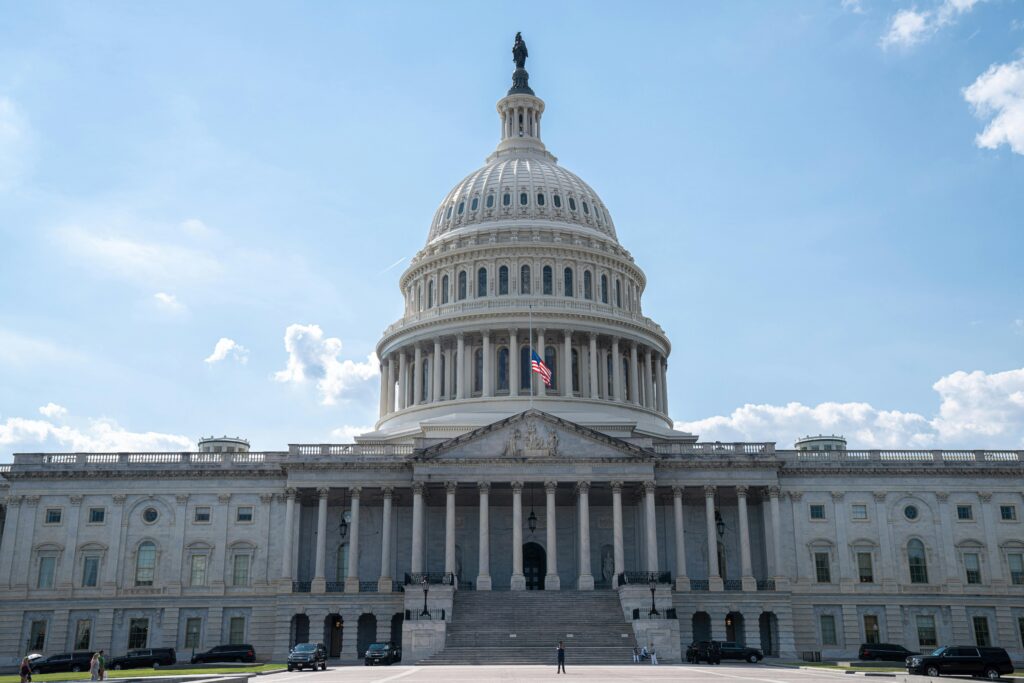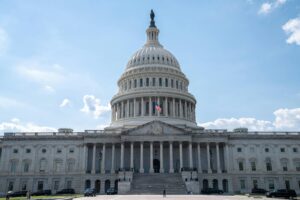A bipartisan group of 48 U.S. senators introduced legislation Wednesday that would overturn President Trump’s executive orders aimed at stripping collective bargaining rights from the majority of the federal workforce. The measure would also restore labor agreements that federal agencies began canceling last month, marking one of the most significant challenges yet to the administration’s controversial labor policies.
The Trump Administration’s Orders
In March 2025, President Trump invoked a seldom-used clause of the 1978 Civil Service Reform Act to issue an executive order that banned unions in most federal agencies, citing national security concerns as justification. The move stunned federal labor groups and drew immediate comparisons to historic anti-labor crackdowns in both the public and private sectors.
Just weeks later, Trump doubled down by signing a second executive order that extended the ban to an additional half-dozen agencies. Taken together, the two edicts effectively cut off collective bargaining rights for nearly two-thirds of the civilian federal workforce, representing one of the most sweeping attacks on organized labor in U.S. history.
The administration defended its actions as necessary to streamline government operations, but unions, lawmakers, and legal scholars quickly raised alarms, calling the orders unlawful and politically motivated. Multiple lawsuits were filed challenging the orders, though appellate courts have thus far allowed the administration to proceed with implementation while litigation continues.
The Protect America’s Workforce Act
In response, senators introduced the Protect America’s Workforce Act, a bill designed to nullify both executive orders outright.
Specifically, the legislation would:
- Declare the executive orders signed in March and April null and void.
- Restore all collective bargaining agreements that were in place as of March 26, before the first order took effect.
- Ensure that federal agencies cannot unilaterally cancel contracts without following established bargaining processes.
By reinstating contracts and reaffirming union rights, the bill seeks to preserve decades of labor protections that lawmakers and unions argue are essential for a fair, merit-based federal workforce.
Senators Condemn “Union-Busting”
The legislation has the backing of all 47 Senate Democrats as well as Sen. Lisa Murkowski (R-Alaska), who joined the effort in what supporters hope will be the first of several Republican defections.
Sen. Mark Warner (D-Va.), the bill’s lead sponsor, described the executive orders as a direct attack on the nonpartisan civil service.
“From the gutting of essential government agencies to the politicization of nonpartisan government jobs, there’s never been a tougher time to be a federal worker,” Warner said. “As the Trump administration continues to terrorize the federal workforce, I’m proud to introduce legislation to safeguard the longstanding protections that federal employees need right now.”
Sen. Chris Van Hollen (D-Md.) echoed Warner’s concerns, framing the orders as an effort to replace skilled professionals with political loyalists.
“Every day our patriotic, merit-based civil servants provide essential services to the American public—and their collective bargaining rights are critical to protecting them from unfair labor practices as they carry out that important work,” Van Hollen said. “Trump wants to strip them of these rights so he can continue to gut the federal workforce and easily replace them with political cronies who will do his bidding without regard for the law. This bipartisan bill will stop this lawless union-busting power grab—and protect the integrity of our federal workforce and the services they provide.”
Legislative Momentum Builds
The Senate action comes just one week after the House passed its draft of the 2025 National Defense Authorization Act (NDAA). That version of the bill included a provision ensuring that collective bargaining rights for civilian employees of the Defense Department would remain intact.
Separately, a discharge petition in the House seeking to force a floor vote on a companion measure to undo Trump’s orders has gained traction. Freshman Rep. James Walkinshaw (D-Va.) became the 216th lawmaker to sign the petition last week. It now needs just two more signatures to advance.
Taken together, these developments reflect growing momentum in Congress to challenge the executive orders and defend labor rights for federal workers.
Unions Rally Behind the Bill
Federal employee unions strongly welcomed the introduction of the Protect America’s Workforce Act, seeing it as a pivotal opportunity to reverse what they view as an unprecedented assault on organized labor.
Everett Kelley, national president of the American Federation of Government Employees (AFGE), issued a sharp rebuke of the administration’s actions.
“President Trump’s March executive order stripping most of the federal workforce of collective bargaining rights represents the single most aggressive action taken by the federal government against organized labor in U.S. history, dwarfing any previous action against public or private sector working Americans,” Kelley said. “AFGE members are grateful to Sen. Warner for introducing the Protect America’s Workforce Act and standing up for the nonpartisan civil service, the women and men who serve in it, and the critical role that collective bargaining has played for decades in fostering a safe, productive and collaborative workplace that serves the American people.”
Matt Biggs, national president of the International Federation of Professional and Technical Engineers (IFPTE), drew on his union’s long history to illustrate the stakes.
“IFPTE was founded in 1918 by federal workers at the Norfolk Naval Shipyard, and other Navy shipyards joined together, just as our nation entered World War I,” Biggs said. “At agencies that support military readiness, advance scientific breakthroughs and space exploration, protect communities and commerce from environmental hazards, our federal sector local unions have a long and proud history of making sure federal employees and the federal agencies can succeed and serve the American public. We know full well that the Trump administration’s executive orders to deny over 1 million federal workers their bargaining rights on a bogus national security rationale make this the most anti-labor, anti-worker administration in United States history.”
Broader Implications
Supporters of the Protect America’s Workforce Act argue that the issue goes beyond union rights. They say the legislation is about defending the principle of a nonpartisan, professional civil service that operates independently of political influence.
Without collective bargaining, unions warn, federal employees could face arbitrary firings, politically motivated hiring, and diminished workplace protections. Advocates stress that this not only undermines workers’ rights but also weakens the federal government’s ability to serve the public effectively.
Critics of Trump’s orders also note that collective bargaining agreements help reduce costly disputes, foster collaboration, and create safer workplaces—benefits that ultimately improve efficiency for taxpayers.
What Happens Next
The Protect America’s Workforce Act is expected to face hearings in the coming weeks. While Democrats are united behind the bill, its fate will likely hinge on whether additional Republicans join Murkowski in breaking with the Trump administration.
Meanwhile, unions are mobilizing their members to pressure lawmakers in both chambers to act quickly. With court challenges ongoing, they see legislative action as the most reliable way to restore rights that millions of federal employees have long relied upon.
For now, the battle over federal labor rights continues to escalate, setting the stage for one of the most consequential labor showdowns in modern U.S. history.







